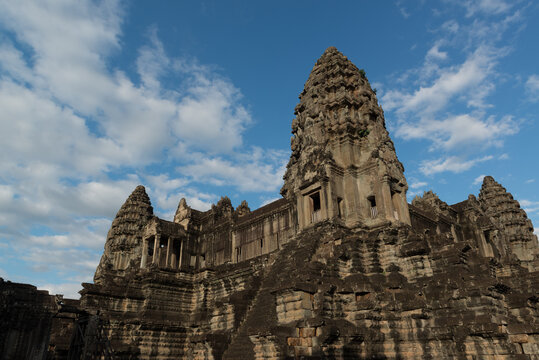Angkor is one of the most important archaeological sites in South-East Asia. Stretching over some 400 km, including forested area, Angkor Archaeological Park contains the magnificent remains of the different capitals of the Khmer Empire, from the 9th to the 15th century. They include the famous Temple of Angkor Wat and, at Angkor Thom, the Bayon Temple with its countless sculptural decorations. For several centuries Angkor was the centre of the Khmer Kingdom.

Image Credits: Wiki Commons
With impressive monuments, several different ancient urban plans and large water reservoirs, the site is a unique concentration of features testifying to an exceptional civilization. Temples such as Angkor Wat, the Bayon, Preah Khan and Ta Prohm, exemplars of Khmer architecture, are closely linked to their geographical context as well as being imbued with symbolic significance. The architecture and layout of the successive capitals bear witness to a high level of social order and ranking within the Khmer Empire. Angkor is therefore a major site exemplifying cultural, religious and symbolic values, as well as containing high architectural, archaeological and artistic significance.

Image Credits: Wiki Commons
The park encompasses many villages that are scattered throughout it and the ancestors in some of these villages can be traced back to the Angkor period. The population practises agriculture and more specifically rice cultivation. The Angkor complex represents the entire range of Khmer art from the 9th to the 14th centuries and includes a number of indisputable artistic masterpieces (e.g. Angkor Wat, the Bayon, Banteay Srei). The influence of Khmer art as developed at Angkor was a profound one over much of Southeast Asia and played a fundamental role in its distinctive evolution. The Khmer Empire of the 9th-14th centuries encompassed much of Southeast Asia and played a formative role in the political and cultural development of the region. All that remains of that civilization is its rich heritage of cult structures in brick and stone.
Khmer architecture evolved largely from that of the Indian sub-continent, from which it soon became clearly distinct as it developed its own special characteristics, some independently evolved and others acquired from neighbouring cultural traditions. The result was a new artistic horizon in oriental art and architecture.



















